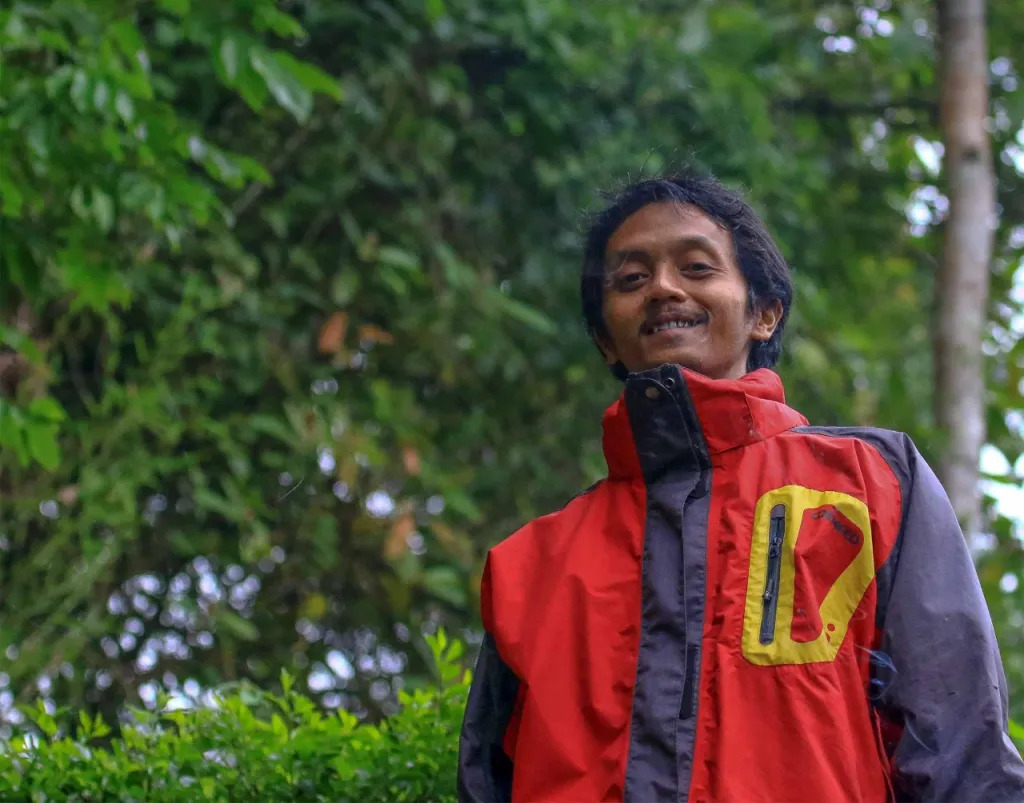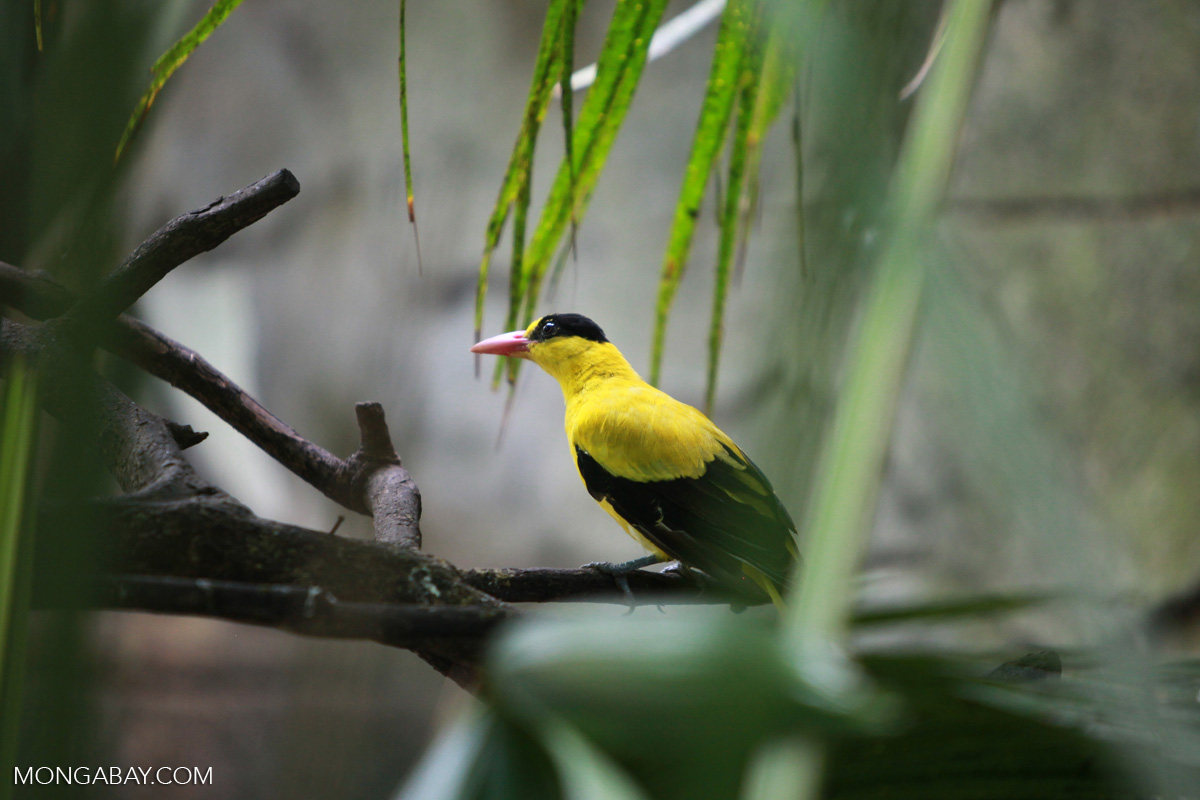- Swiss Winasis launched the bird-spotting app Burungnesia in 2016, aiming to engage the wider public in reporting bird sightings and to raise awareness about the importance of bird conservation.
- Indonesia is a hotspot of avian biodiversity, but also a global hub of the illegal bird trade, with many species captured for the lucrative songbird market.
- To date, Burungnesia’s users have recorded some 1,300 species from around 32,000 locations, including the rediscovery of the critically endangered black-browed babbler — a species that hadn’t been seen in 170 years.
- In an interview with Mongabay, Swiss acknowledges the powerful economic incentives driving the bird trade, but says change can start at the individual level by spreading awareness.
The biodiversity crisis is driving the disappearance of birds from the wild, and nowhere is that more apparent than in Indonesia, a global hotspot of avian life. That’s why Swiss Winasis, the founder of crowdsourcing platform Burungnesia, says collecting accurate data on rare birds for conservation is vital.
Run by a team of four, Burungnesia was launched in 2016 to gather digital data and information from bird-watchers across Indonesia. The app allows users to record bird sightings in the wild, mobilizing the power of citizen science for bird conservation.
Currently available for Android users, Burungnesia has also grown into a platform for discovery and learning. Through the app, anyone can view and identify birds endemic to Indonesia. Conservation records in the country, Swiss says, are often limited, inaccessible, or damaged, so the app strives to let users record findings with ease.
Swiss hails from Malang, a city in East Java province. It was while studying wildlife and forest conservation at a public university in Yogyakarta that he “got introduced to birds” by fellow students and became immersed in the bird-watching community.
The differences in his observations from the early 2000s and now are jarring, he says, but there are small victories to celebrate. The team has observed an interest in bird-watching among people outside the community since Burungnesia’s conception. More people are playing a role in bird monitoring and conservation, Swiss says, even just by sharing real-time findings on social media platforms.

Mongabay spoke with Swiss Winansis about his growing community-based platform and bird conservation in Indonesia, the importance of raising awareness from the individual level, and getting a shout-out from a Hollywood A-lister. The following interview has been lightly edited for clarity and length.
Mongabay: Why is bird conservation important to you?
Swiss Winasis: It’s important to look at it from a wider angle: the biological component of the environment as a whole, as well as the abiotic components. Each has a role. If one goes missing, it’s like a bike without tires. It just won’t function well. Birds have many roles, from controlling pests, and seed dispersal, to pollination.
If you compare it to the ’90s, people now are more aware of our country’s biodiversity. More people are curious to learn, and even become passionate about bird conservation when they witness birds in the wild.
Does that mean the threats are reduced? Not really. People showing more care is good news, but it’s good news in a sea of other news that’s not getting better.
I started to take bird conservation more seriously. At first, it was thanks to my seniors at university. But I later met people outside my circle who turned out to be bird-watchers, too. Even outside the community, many people care about the cause but they’re unsure of how to turn their “care” into further action.
Mongabay: What do you think are the main threats facing birds and wildlife in Indonesia now?
Swiss Winasis: There are two significant factors in my opinion. First, money. Big funding that comes from big companies or investors sets an agenda of its own. Second, commitment to the law. These are two different sides of the same coin, they can’t be separated.
When we wrote an open letter to the Ministry of Environment and Forestry, we demonstrated a concrete example of how money talks. The community celebrated a win when the Ministry of Environment and Forestry’s [updated] list of protected species came out in 2018. Not even a month later, three species of birds were removed from the list. For example, ironwood is getting rarer but it was also taken out of the list. Why? There’s capital behind it.
When it comes to knowledge of the law and the consequences of their actions, all of them are well informed. Go to the bird market. Ask any bird seller. They know which are protected and which aren’t. They also understand very well which bird is getting rare or hard to find. But then again, it’s about how the law is enforced.

Mongabay: Speaking of the open letter you wrote in 2018, have we seen any positive changes since then?
Swiss Wanasis: Not in regards to the regulation. I’m seeing with some friends at the [environment ministry’s] directorate-general of conservation, though, that the authorities have been moving quickly to cut transportation routes for bird trading in Indonesia. What they’re doing has a significant impact.
Legally, the preservation of birds and animals is in the hands of the Ministry of Environment and Forestry. But at the local level, [the ministry] can’t take action outside their jurisdiction, such as national parks. The trading of the birds happens via public roads, and especially by sea — and that is not their area.
The good thing is that they are working with port patrols and customs control, so they can help breach that. The animals are taken from nature, meaning that if it is out of the forest area, the Ministry of Environment and Forestry cannot act. But once it enters the port, the legal authorities for quarantine step in. It’s proven to be very effective. They’re able to cut the circulation of illegal bird trading; maybe the last three years have been quite significant.
Mongabay: How do you think your app Burungnesia has helped in the matter?
Swiss Wanasis: We do things realistically at Burungnesia, from the smallest things. For example, we use social media as a tool to create positive content. When people like and share, they spread the news or message as well as some positivity. And it’s been proven that our followers are not just bird-watchers. We’ve caught the attention of many people outside the community.
We could also say “let’s stop catching birds,” but what is the actual solution? Even if we capture the attention of just three people, I think that’s more productive; because Burungesia doesn’t necessarily focus on education.

Mongabay: How many species of birds are recorded on the app to date?
Swiss Wanasis: Around 1,300 species. Location, maybe around 32,000 spots. We have roughly 200 active users out of the 4,000 who registered.
Many species are hard to come by these days. The jalak suren [Javan pied myna, Gracupica jalla] is extremely hard to find; so is the kucica hutan [white-rumped shama, Copsychus malabaricus] among others. It’s mainly due to geographical factors, such as birds in the remote mountains of Papua and far corners of Kalimantan [Indonesian Borneo], especially the small islands, they’re all difficult to access. We don’t really have sponsors or funding to travel to more “obscure” places.
Mongabay: What is the most fascinating find so far?
Swiss Wanasis: The pelanduk Kalimantan [black-browed babbler, Malacocincla perspicillata]. That was pretty shocking. Even Leonardo DiCaprio reposted our finding on Instagram. Thanks to the attention we received, the Burungnesia team is able to set out to Sumatra for an expedition to find the sikatan Aceh [Rück’s blue flycatcher, Cyornis ruckii] that has not been seen for a century. We’re currently on the lookout for them.
Mongabay: Could you tell us more about the app’s great reception from people outside the community, since you mentioned earlier that you garnered a lot of attention from social media?
Swiss Wanasis: More and more people are taking a peek, at least. “Oh, this bird is beautiful” or “Oh, that bird is endemic to Indonesia?” It’s making people want to know more, to dig a little deeper and be active in this world. In many cases, it leads to that.
One post from last month got around 73,000 non-followers engaging with us.

Mongabay: Any user success stories you’re most proud of?
Swiss Wanasis: Some of our users used to be poachers, in Papua and Java mostly. They are now active contributors of Burungnesia. For me, that’s a great achievement. We’re not just raising awareness but also helping people change their minds in regards to how they make their living.
A lot of our users are young people and university students. Our app has proven to be useful for research as well as commercial purposes. People ask for our data and illustrations for these uses. Even members of the environment ministry have utilized our data in consideration of revising the protected species list.
Also, our data is used to determine or reassess the status of a species. One big example is the Javan hawk-eagle [Nisaetus bartelsi]. It was known to be one of the rarest Javan species but more people are seeing it in the wild, which means its status can be reevaluated.
Mongabay: Indonesia is widely regarded as the epicenter of the bird trade in Southeast Asia. Scaling it down from the community level to us as individuals, as Indonesians especially, what small acts could we do to help tackle the threats to our birds?
Swiss Wanasis: We have way passed the period of exploitation. It’s really the time to start thinking about sustainability, and how we can make sure that our home is taken care of. At least have the awareness and understanding of the value of biodiversity.
Start from the people closest to you. I like to take my family out to see birds in the wilderness. Then, my kids would tell their peers and teachers at school. One teacher was very intrigued and came to me with questions. Even from there, the message and knowledge get wider. I think that’s what we can do on a personal level.

Mongabay: Do you think captive breeding is key to the country’s songbird crisis?
Swiss Wanasis: In theory, yes, it can be very helpful. By law, breeders have to release 10% of the animals bred in captivity back into nature. But the discussion — or excuses for some — revolves around: what if we release them and they get caught by poachers again?
Also, there are a lot of illegal breeding centers. Because they are not official, they are not bound by law to release the animals back into nature. And the number of these unregistered bird breeding sites is astonishing.
Mongabay: Burungnesia is spearheading citizen science in Indonesia, which is proving to have great impact on bird conservation awareness and research. Any challenges that come with operating an app that is driven by user-generated content?
Swiss Wanasis: The biggest challenge is dealing with people from the economic side of things. People whose only interest is to capture and trade birds. There’s always a driving force behind it. How can we fight big investors when we ourselves have little to no funding? There’s always money supporting the bird business. We just need consistency.
At Burungnesia, we don’t repost or reproduce content from elsewhere. We create our own content that goes through a verification process. I think this raises credibility as well, so people know that the content we put out is factual information.
Mongabay: What are your hopes for the future?
Swiss Wanasis: Hopefully Burungnesia will be accepted by a wider audience to increase the number of users so that the information collected will also grow massively, and shine a light on the “unlit” spaces of the bird world. From the out-of-reach corners of Maluku to Papua, I hope we can open some doors there.
Banner image: An owl in Yogyakarta, Indonesia. Image by IvanH via Unsplash.
